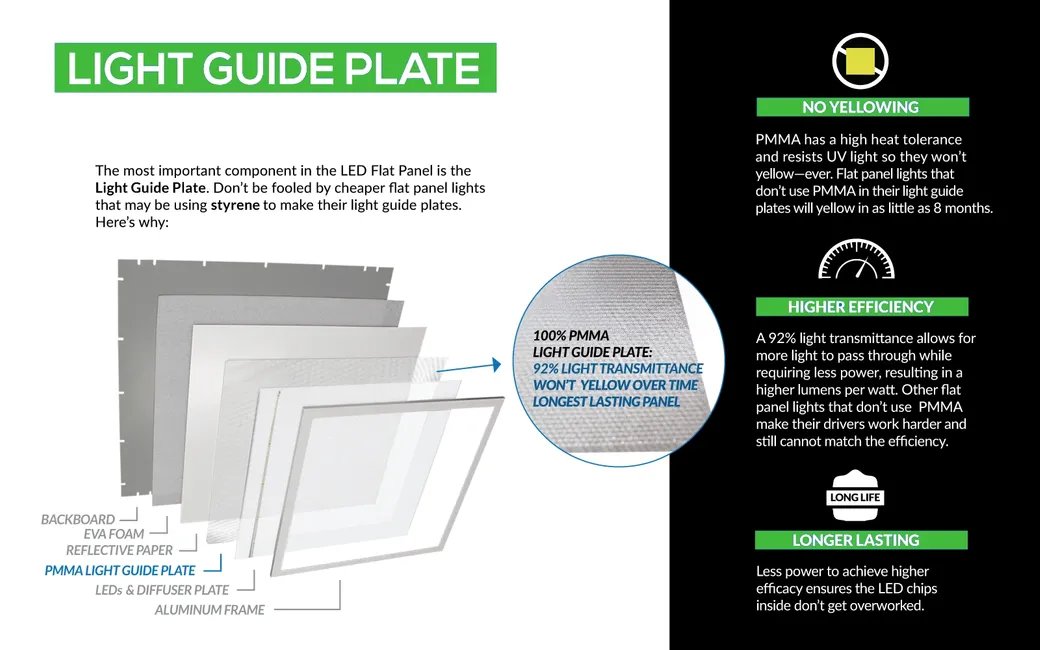Why Is Using PMMA To Make A Light Guide Plate Essential?
Using PMMA as the material for the light guide plate in flat LED panels means a premium luminaire that is designed to be trouble-free. Here’s three reasons why:
- PMMA has a high heat tolerance and resists UV light so they won’t yellow—ever. Flat panel lights that use other materials such as polystyrene in their light guide plates will yellow in as little as 8 months.
- Higher Efficiency. With a 92% light transmittance, PMMA allows more light to pass through while requiring less power, resulting in a higher lumens per watt. Other flat panel lights that don’t use PMMA make their drivers work harder and still cannot match the efficiency.
- Longer Life. Less power to achieve higher efficacy ensures the LED chips inside don’t get overworked (and don’t forget, you’ll avoid the ticking time bomb of a warranty nightmare because the panels won’t yellow!).
The Most Important Component in the LED Flat Panel
The Light Guide Plate is the most important piece and also the most expensive, depending on what material is used to make it. Quality flat panel ceiling lights use 100% polymethyl methacrylate (PMMA) a.k.a. acrylic, a lightweight material that’s so strong, it is used for spectator protection in hockey rinks and even for the ceiling of the Houston Astrodome. But cheaper flat panel lights may be using other materials, such as polystyrene (PS) (stuff used to make disposable cutlery and packaging) to make their light guide plates.
When it comes to comparing PMMA with PS, there’s clearly a difference of quality and cost.
